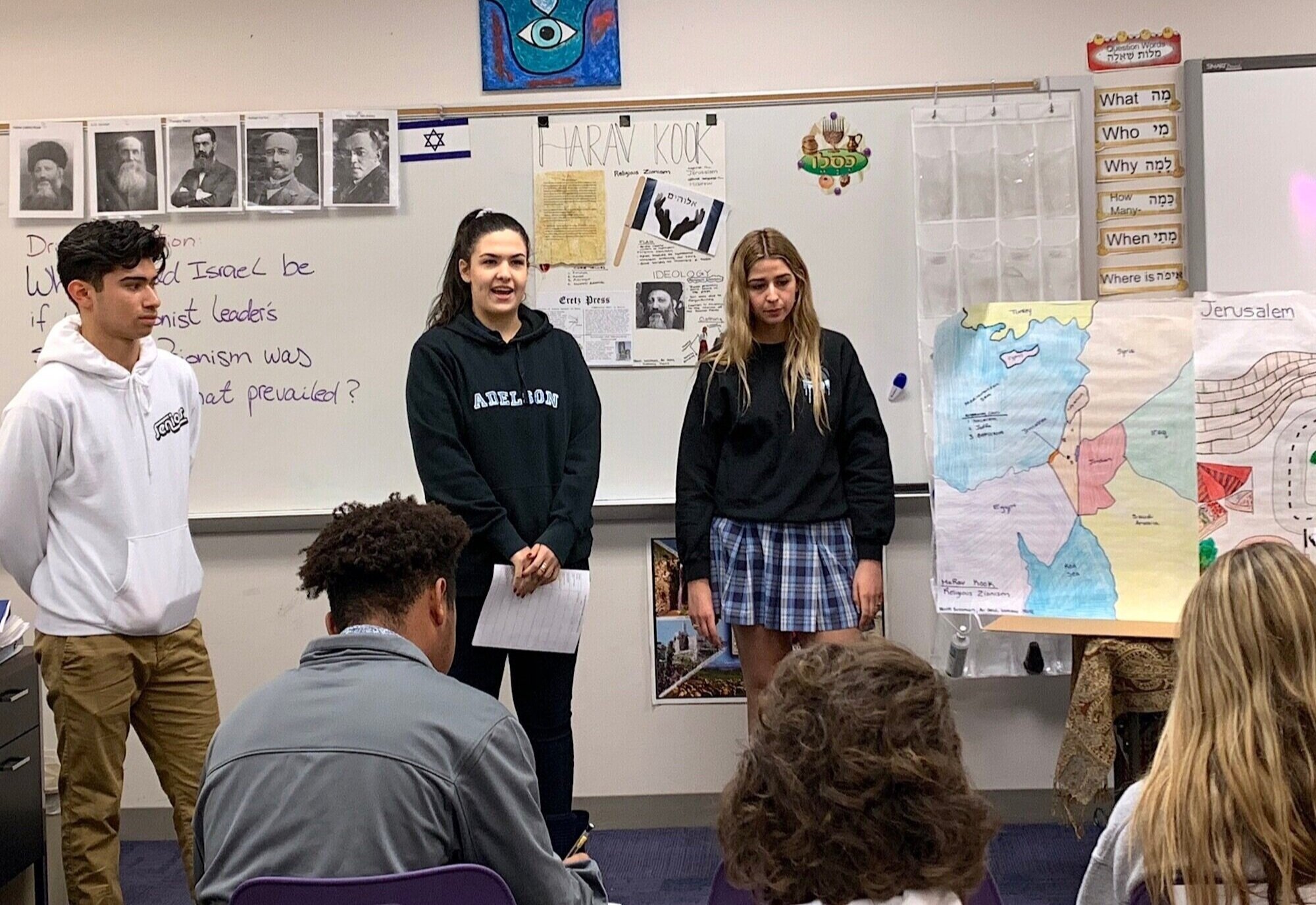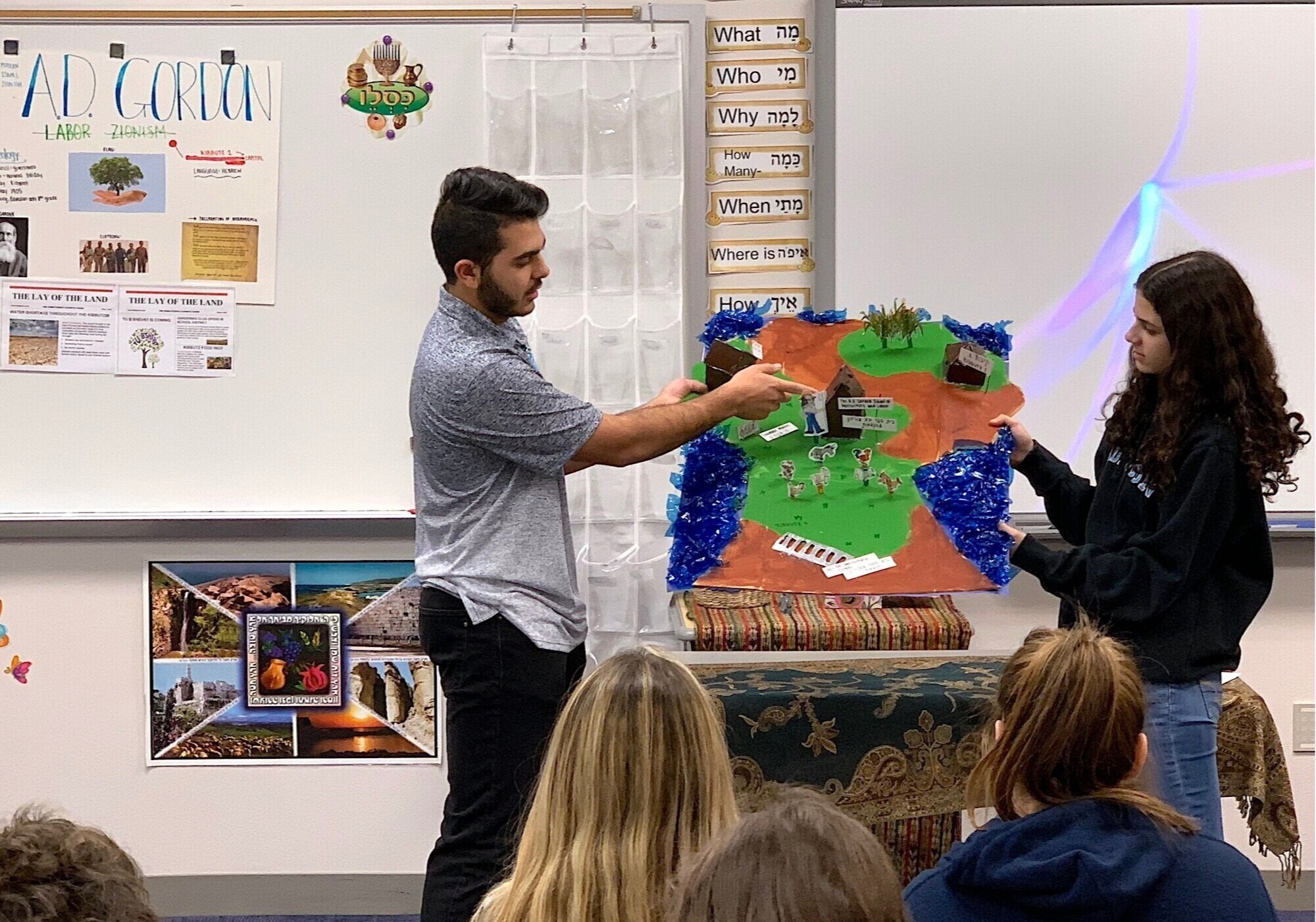What would a nation look like if the relative influence of its founders — or the actions of pivotal leaders along the way — varied from the course of events we recognize as history? High school students tackle a PBL addressing this theme applied to Modern Israel.
One Teacher’s PBL Approach in a Modern Israel Course
History is a tricky subject to teach. Looking backward is taught with the intention of looking forward, but instruction can often lapse into knowledge-level memorization of facts, timelines, and maps. Digging deeper to the application, analysis, synthesis, and evaluation of ideas requires an active context in which students can create something tangible in the present. In formulating her plan to engage students in learning about the modern state of Israel, teacher Ayelet Blit brainstormed with colleagues to hatch the Streams of Zionism PBL: What would Israel look like if the vision of a single Zionist leader was the only one that prevailed? This became the driving question that Morah Blit posed to juniors and seniors in her Modern Israel course at the Adelson Educational Campus (Las Vegas, NV). “It is very challenging to fully understand today’s Israel without knowing and understanding the different ideologies that were there in the beginning. Israel today is a combination of all of them. So, the main goal was to learn and understand the different streams, their leaders, and ideologies,” notes Morah Blit.
Like any butterfly effect, slight variations in the timeline of history would amplify to produce a different world than we see today. Learning and understanding the key moments and movements in our history forces students to examine causality – and consider deeply how today’s governance shapes their own futures. Alternative history is not revisionist history – it empowers students to formulate comparative “what if” scenarios and extrapolate how the students are the architects of their own futures, and the future of their world. From books such as “Abraham Lincoln, Vampire Hunter” and “The Difference Engine” to TV series including and “The Man in the High Tower” and “Timeless,” alternative history pushes us to draw connections between then and now, thinking critically about the actions we take in the present -- and the resulting history those actions yield.
Setting Up the Problem
To draw the connection between Israel then and Israel now, Morah Blit formed student teams to research prominent Jewish visionaries. These leaders and philosophers consisted of Theodor Herzl (political Zionism), Ahad Ha’Am (Cultural Zionism), Dov Ber Borochov (Socialist/Labor Zionism), A.D. Gordon (Socialist/Labor Zionism), Rav Kook (Religious Zionism), Ze’ev Jabotinsky (Revisionist Zionism). She then asked students to develop and articulate a re-imagined Israel according to each visionary. This included consideration of the geographic location of the State of Israel, system of governance, economic structure, and national language. Along the way, students were invited to invent and produce a variety of artifacts rooted in, and representative of, their visionary’s Zionist perspective, including a constitution, a 3D model of a typical city, a newspaper front page, and a flag.
Teams culminated their work by presenting completed projects to peers and faculty and engaging in a question-and-answer session about their reimagined Israels. For example, a team focusing on Herzl discussed their unique choice to situate Israel in present-day Argentina and establish German as the national language. Emphasizing the importance of culture and leaning in their country, the team created and showcased a Minecraft animation of the local university. The research, collaboration, critical thinking and development process was evident in each presentation – and the audience gained new insights to modern Israel through each team’s synthesis of alternative histories. Morah Blit was elated with the outcome: “They stepped up and presented with confidence. They definitely delivered.”
Next Steps…
As this phase of the Streams of Zionism project wraps up, Morah Blit notes that this is really just the beginning of her students’ examination of Modern Israel. She notes, “Our work is not done yet. Each team researched only one stream and created an imaginary Israel that represented the Zionist leader’s ideology and personality. Through different activities, students are now learning from each other about the streams researched by peer teams. Additionally, teams will create electronic games about their streams, in Jeopardy-style formats, for use by sophomores in their Humanities class.”
Morah Blit shared her final thoughts about the biggest take-aways from the Streams of Zionism PBL: “First, I hope my students will be able to have conversations about Israel with a deeper understanding of its basic complexity. How did these visionaries influence Israel? On what, and how did they needed to compromise? How are these streams manifesting themselves in Israel today? And second, I hope that they will be able to apply different learning and life skills they used here when they are in college and later in the workforce. The soft skills they grew during this project will serve them throughout their lifetimes.” And those lifetimes will be students’ own histories in the making.
The bottom line: Alternative History PBLs push students to think deeply about the interconnected sequence of events and the human drivers who shaped the world we now know. If the balance of power attributed to celebrated (or vilified) leaders, visionaries, explorers, philosophers and scientists shifted — or if a small, but impactful event caused any of them to change course even slightly — how would that disruption in the timeline manifest itself in the world we now know? The problem requires a high level of research, analysis, and synthesis, with student teams achieving surprisingly different outcomes.
First published in the Pride Blog, Adelson Educational Campus
Photo credits: Camille McCue


